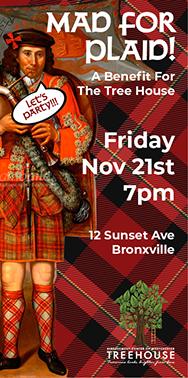From the Mayor: New Yorkers Are Leaving the State in Record Numbers

Mary C. Marvin, Mayor, Village of Bronxville
Apr. 3, 2019: New Yorkers are leaving the state in record numbers, which should be a cause of concern to us all. Overall, New York is grappling with a population that is growing more slowly than almost every other state as well as an out-migration of over one million people in the past decade, more than any other state.
It is also the wealthiest who are leaving who pay the most taxes, resulting in a profound effect on the state’s finances and added burden on those who remain residents. The situation is mirrored in other high-taxed states, such as New Jersey, California, Massachusetts, and Connecticut. Last year, more residents left New Jersey than any other state. What all these states have in common is a steeply progressive tax code. In New York, the top 1% pay 46% of the taxes. Governor Cuomo recently said, “God forbid if the rich leave.” Yet in the new budget just reached on April 1, a so-called “mansion tax” was added on pricey luxury homes.
The current combined New York City and state taxes pre the new mansion tax are now 12.7 percent, while Florida has no income or estate tax.
According to a recent National Movers Study conducted by United Van Lines tracking the state-to-state migration patterns in 2018, 61.5 percent of New Yorkers moving left the state and 41 percent of those had incomes above $150,000.
Last year, a study by Wallet Hub looked at states ranked by their total tax burden, and New York came out on top. In contrast, the five lowest taxed states – Florida, Texas, North Carolina, South Carolina, and Washington – gained the most new residents. In short, high taxes drive people away and low taxes attract them. The recent changes in the deductibility of federal taxes certainly haven’t helped New York, and those with the most income have the most choice and mobility.
The Wall Street Journal recently did a story of the growing number of wealthy tax refugees from New York, New Jersey, and Illinois showing up in Miami to buy condos. Instead of looking at ways to lower taxes, New York has chosen to beef up the auditing capabilities of the State Department of Taxation and Finance. New York conducted 3,000 “non-residency” audits a year between 2010 and 2017, collecting approximately $1 billion dollars.
The ante has been upped between tax collectors and wealthy New Yorkers who are moving to Florida reaching new levels of investigation and going high-tech.
Conventional wisdom holds that if you’re out of New York State for 183 days, you don’t have to pay state taxes. But tax advisors say that while the number of days matter, the real test for auditors is “domicile” – being able to prove that a taxpayer’s permanent, primary home is in Florida rather than New York.
Because defining “domicile” is subjective, New York State ends up winning more than half of its tax residency audits, but even at that, for many of the wealthy, they move from New York to ultimately escape the estate tax, which is 16 percent on estates above $5.5 million vs zero in Florida.
Auditors now check that your home in New York is smaller and less expensive than the Florida home, even going in the refrigerator to see the amount of food and expiration dates. They also check for the location of prized artwork, wedding albums, and family photographs, as people keep closest to them what they hold most dear.
In that same vein, the location of the family dog can be determinative. As one famous plaintiff’s attorney said, “If you want to lose a case very quickly, kennel your dog in New York when you travel.” The state also now has the capability to track the location of all calls made and received.
It is a shame that more time, brainpower, and expertise is not put into ways to make New York an affordable home for everyone rather than spend inordinate efforts to get one last check out of people before they leave.
New York is in a crisis, and this new state budget seems to ignore the true urgency of easing the tax burdens that make living here unsustainable, sadly for an increasing number of New Yorkers.
Editor's note: As a public service, MyhometownBronxville publishes articles from local institutions, officeholders, and individuals. MyhometownBronxville does not fact-check statements therein, and any opinions expressed therein do not necessarily reflect the thinking of its staff.
Government & History Directory
Bronxville is a quaint village (one square mile) located just 16 miles north of midtown Manhattan (roughly 30 minutes on the train) and has a population of approximately 6,500. It is known as a premier community with an excellent public school (K-12) and easy access to Manhattan. Bronxville offers many amenities including an attractive business district, a hospital (Lawrence Hospital), public paddle and tennis courts, fine dining at local restaurants, two private country clubs and a community library.
While the earliest settlers of Bronxville date back to the first half of the 18th century, the history of the modern suburb of Bronxville began in 1890 when William Van Duzer Lawrence purchased a farm and commissioned the architect, William A. Bates, to design a planned community of houses for well-known artists and professionals that became a thriving art colony. This community, now called Lawrence Park, is listed on the National register of Historic Places and many of the homes still have artists’ studios. A neighborhood association within Lawrence Park called “The Hilltop Association” keeps this heritage alive with art shows and other events for neighbors.
Bronxville offers many charming neighborhoods as well as a variety of living options for residents including single family homes, town houses, cooperatives and condominiums. One of the chief benefits of living in “the village” is that your children can attend the Bronxville School.
The Bronxville postal zone (10708, known as “Bronxville PO”) includes the village of Bronxville as well as the Chester Heights section of Eastchester, parts of Tuckahoe and the Lawrence Park West, Cedar Knolls, Armour Villa and Longvale sections of Yonkers. Many of these areas have their own distinct character. For instance, the Armour Villa section has many historic homes and even has its own newsletter called “The Villa Voice” which reports on neighborhood news.
Link to Village of Bronxville One Square Mile Monthly Newsletter
Village of Bronxville Administrative Offices
337-6500
Open 9:00am - 4pm excluding holidays and weekends
Bronxville Police Department
337-0500
Open 24 hours
Bronxville Parking Violations
337-2024
Open 9:00am - 4pm excluding holidays and weekends
Bronxville Fire Deparment
793-6400

















